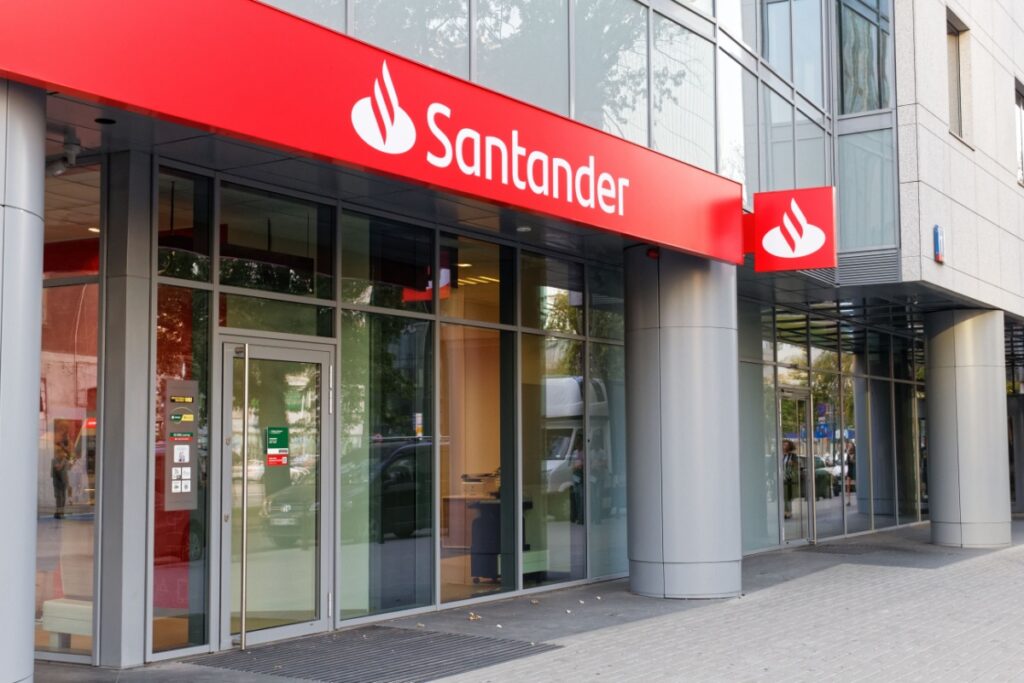Banco Santander posted a record Q3 2025 attributable net profit of €3.5 billion, up about 7.8% year on year (y-o-y), surpassing analyst expectations and marking the sixth straight quarterly record. Management said the group remains on track for its 2025 objectives after a quarter in which higher fee income and disciplined costs offset softer lending revenue.
Results Overview And Key Metrics
Return on tangible equity (ROTE) held around the mid-teens (reported near 16%), while the fully-loaded CET1 ratio stood at about 13.1%, providing capital flexibility for growth and shareholder distributions. Total revenue rose modestly, with fees up and net interest income (NII) edging lower from lending-margin normalization.
The headline result extended a run of strong earnings through the first nine months of the year and reinforced Santander’s strategy of balancing mature European franchises with growth businesses in the United States and Latin America. Management emphasized that diversified earnings helped contain volatility from rate moves and currencies.
Regional Performance: U.S. Strength Offsets Brazil Weakness
The business mix was pivotal. In the United States, underlying net profit jumped 64% year on year, buoyed by stronger lending activity and higher corporate-banking fees. That upswing more than compensated for a decline in Brazil, where currency depreciation weighed on performance and underlying profit fell roughly 6%. In Spain, underlying profit slipped, while the UK improved year on year but remains under heightened regulatory scrutiny tied to motor-finance conduct. Argentina was cited as another drag amid macro pressures. Together, the regional pattern underscores Santander’s capacity to pivot toward areas of strength while managing cyclical softness elsewhere.
In a separate update, Santander UK withheld publication of its Q3 standalone results as it awaits clarity on the Financial Conduct Authority (FCA)’s proposed industry-wide redress framework for historical motor-finance cases. The unit said it does not expect a material impact on capital or liquidity from any provision adjustments and will provide more details around its Q4 disclosure window.
Revenue Drivers, Costs, And Asset Quality
The earnings mix showed resilience beyond interest margins. Fees increased ~4% in the quarter, cushioning a ~1% decline in lending income as rate cuts in parts of Europe and competitive deposit dynamics tempered NII. Operating discipline remained tight, with group efficiency anchored around the low-40% range, reinforcing profitability even as growth normalizes from peak-rate conditions. Asset quality stayed contained: the group-level non-performing loan (NPL) ratio sat just under 3%, and reported cost of risk metrics remained consistent with prior guidance. These indicators, alongside robust capital, support the bank’s assertion that it is progressing toward its full-year targets.
Management reiterated confidence in the capital stack, noting a CET1 (phased-in) near 13.1% and healthy buffers that leave room for strategic lending and shareholder distributions aligned with previously signaled policies. Liquidity remains strong with ample high-quality liquid assets. The combination of fee growth, expense control, and stable credit costs delivered operating leverage that underpinned the new quarterly record.
Outlook And Regulatory Context
Into year-end 2025, Santander is leaning on continued customer-base expansion, payments and wealth-management fees, and selective volume growth in autos and consumer finance—particularly in geographies showing steadier demand. Management also flagged known headwinds: interest-rate normalization in Europe, FX volatility in Brazil, and uneven loan demand across some markets
Even so, the geographically diversified model across Europe, North America, and Latin America remains central to sustaining mid-teens ROTE while preserving prudent capital ratios.
A key external variable is the UK motor-finance process. The FCA has proposed a sector-wide redress scheme with an estimated total cost range of £9 billion to £18 billion, with consultations running through the autumn and potential compensation beginning in 2026. Santander’s UK arm paused its standalone Q3 report pending clarity, while the parent group reiterated its confidence in meeting 2025 objectives. The timeline suggests more definitive guidance may arrive alongside fourth-quarter disclosures.



